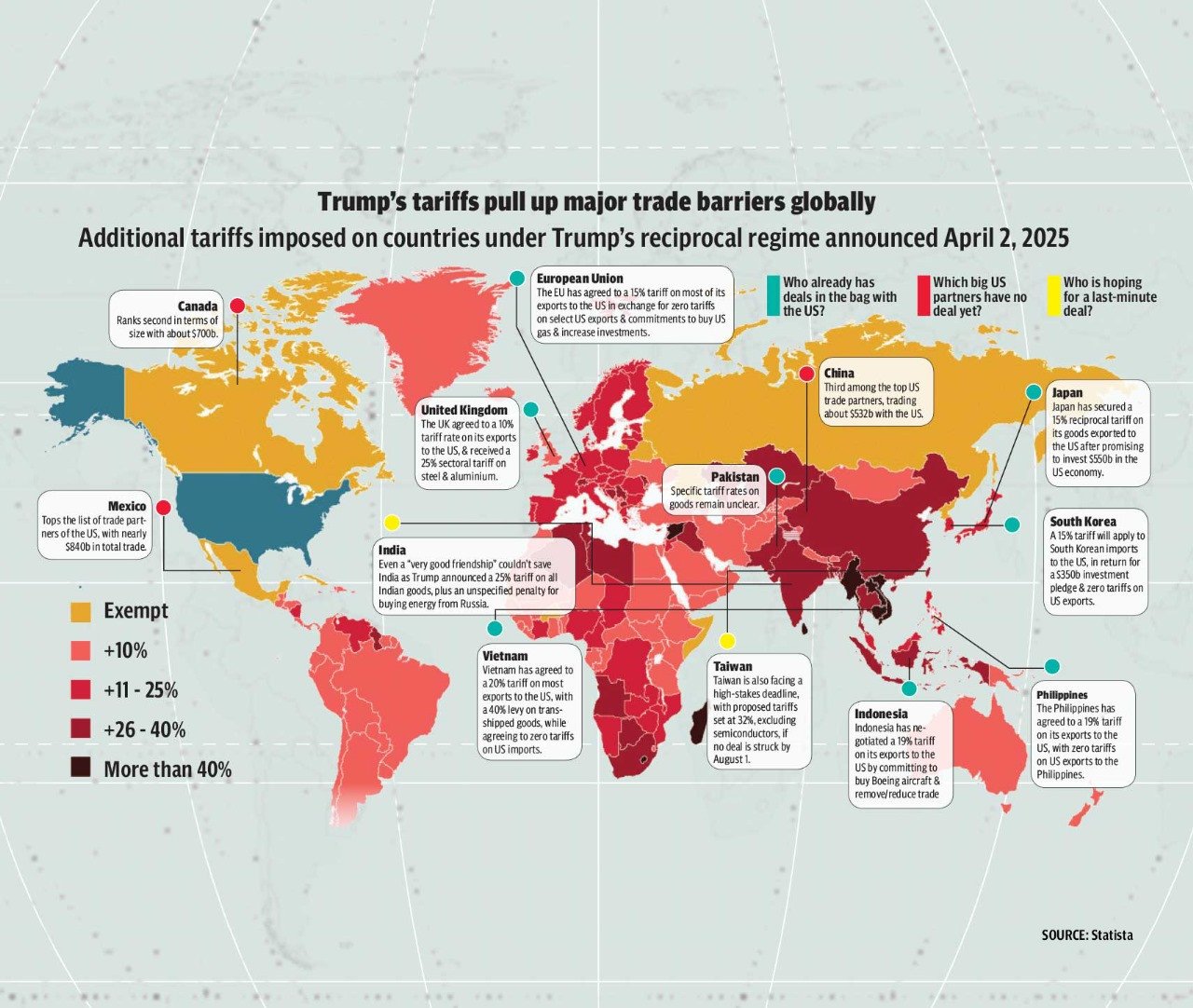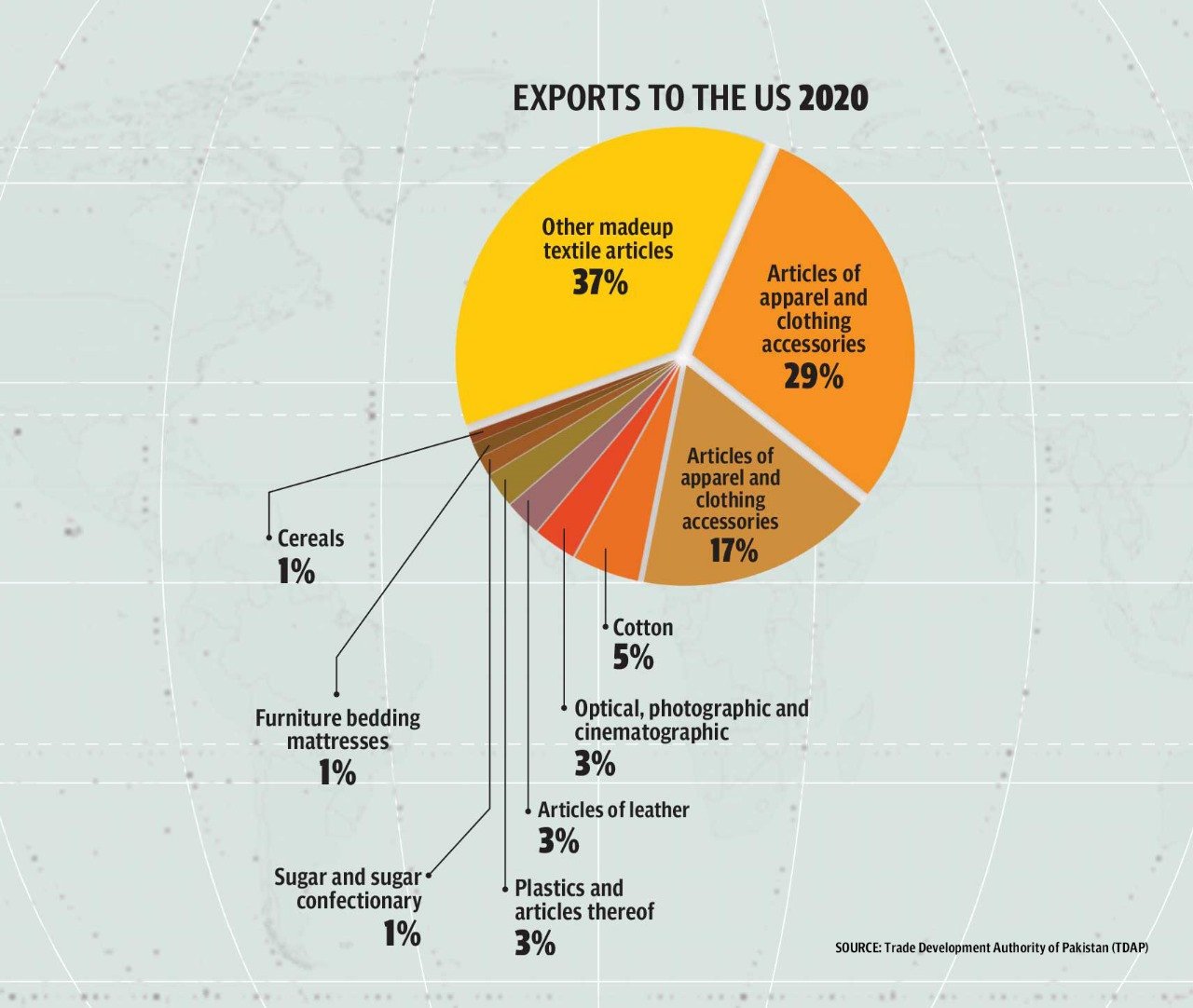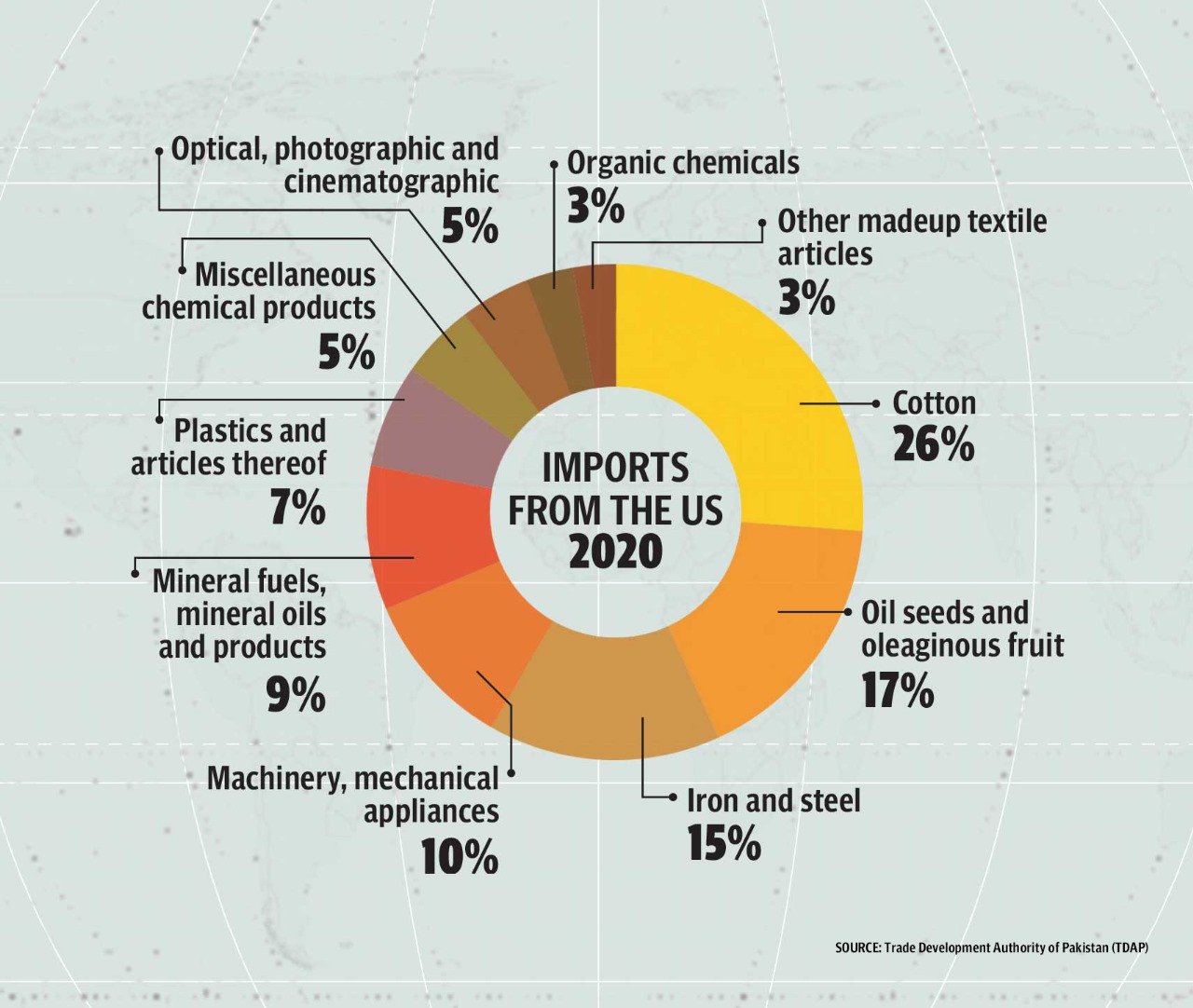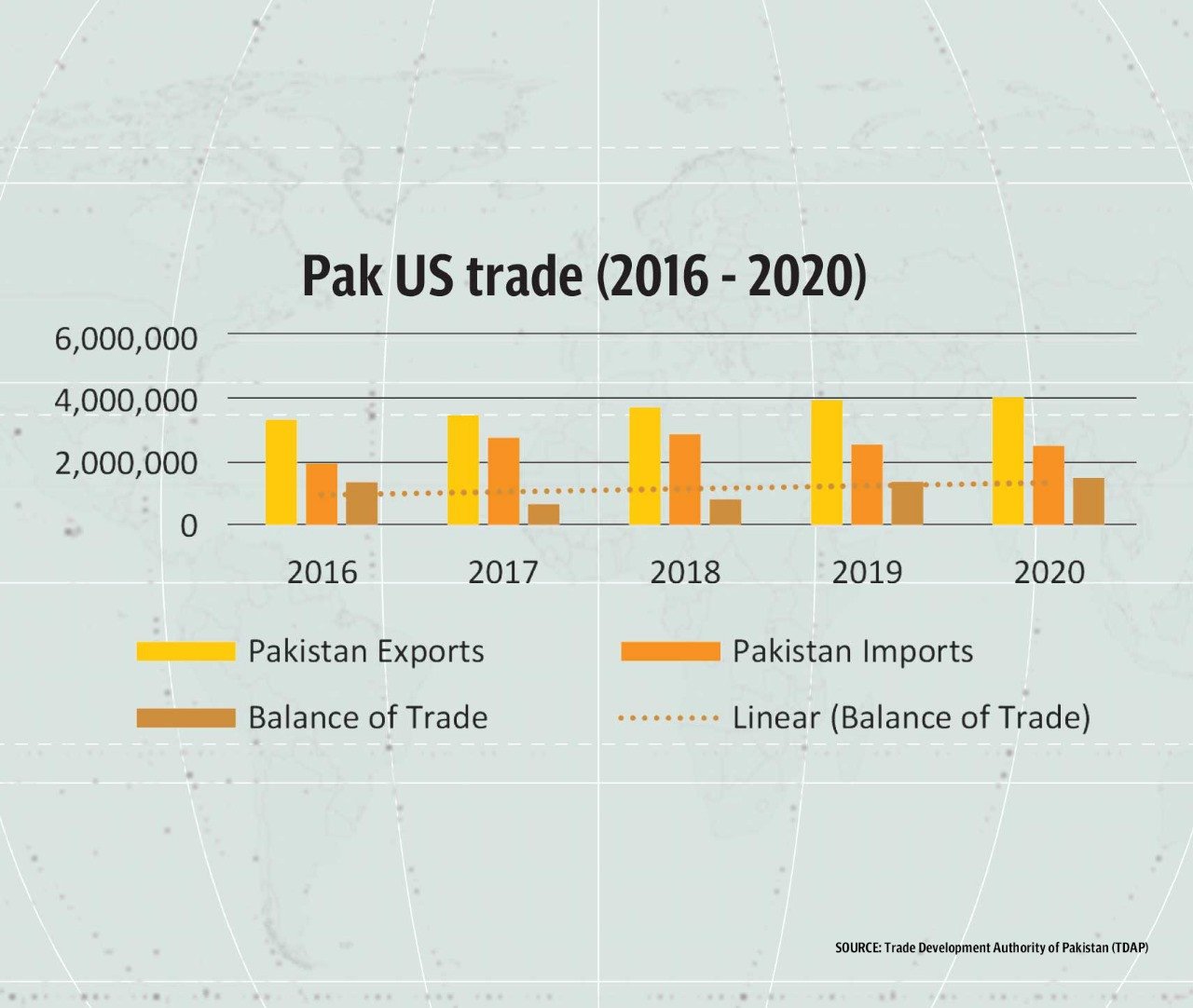In 1987, President Ronald Reagan said that at first when someone says let's impose tariffs on some foreign imports, it looks like they are doing the patriotic thing by protecting the American products and jobs and sometimes for a short while it works but only for a short-time. He went on to say that high tariffs inevitably lead to retaliation by foreign countries and the triggering of fierce trade wars.
Thirty-eight years down the line, President Donald Trump has done exactly the opposite to it, which forced the world capitals to rush to Washington to get some respite at least until they come up with better alternatives.
The US-Pakistan trade deal in the aftermath of Donald Trump’s protectionist policy has apparently given an edge to Washington. But the deal has the potential to benefit Pakistan in many ways, starting from gaining political advantage, retaining market access to the US and luring back American companies after a long time.
The US-Pakistan trade deal has consolidated political relations between the two nations after Islamabad accepted a minimum 19% tariffs on its exports to the states but agreed to a duty-free access to American products against over 4,100 tariff lines with complete market access.

Where the concessions have kept the doors of the US markets open for Pakistani exporters, the deal has lured the United States interest back in Pakistan’s economy, particularly after Washington was wary of growing Chinese penetration in Pakistan. The government of Prime Minister Shehbaz Sharif also stands ready to welcome the US investment in extraction of rare earth metals –the most sought after minerals in the world, which require new technologies and investments.
For some, Pakistan would have negotiated much better tariffs but given the country’s political and economic standing the deal after all is better one, if not the best.
Through the new Executive Order of July 31st, hours before the expiry of the deadline to negotiate deals, President Donald Trump stated that after considering the information and recommendations he determined that it is necessary and appropriate to deal with the national emergency by imposing additional ad valorem duties on goods of certain trading partners.
As a result, Pakistan now faces a 19% tariff on its exports to the United States. The revised tariff for Pakistan is down from the previous retaliatory tax of 29%, which was announced as a threat to come on the negotiations table.
Importantly, the revised tariff is over and above the Most Favoured Nation (MFN) tariff, which means 19% is the minimum rate. Prime Minister’s Coordinator on Commerce Rana Ihsaan Afzal said this at Pakistan’s only premier show on economy, The Review, that 19% tariff was over and above the MFN tariff.

In the last fiscal year, Pakistan exported $6 billion worth of goods to the US compared to $2.4 billion imports, earning a surplus of $3.7 billion, a source of concern for President Donald Trump.
Pakistan has still gained relative advantage over several regional neighbours under the new US tariff regime, with its 19% rate lower than India's 25%, Bangladesh’s 20%, Iraq’s 35%, Vietnam’s 20%, and equal to Malaysia, Thailand and Indonesia’s 19%.
There appears to be political signaling in setting the new rates by President Donald Trump. On April 2, President Trump announced a 26% tariff for India and set its final rate at 25%, lower than Pakistan’s 29% at that time. But he has now kept the Indian tariffs 6% above the Pakistan tariffs.
The US Secretary of Commerce Howard Lutnick apprised the Pakistani negotiating team that he had been instructed by Donald Trump to conclude a favourable deal with investment in mines, minerals and cooperation in areas of artificial intelligence, crypto currencies, digital infrastructure and rare earth metals to help Pakistan’s economy. This was also acknowledged by Finance Minister Muhammad Aurangzeb who said that the deal was a win-win due to Washington’s interest to invest in Pakistan.
It was probably for the first time in over a decade that the US has shown any serious interest in Pakistan’s economy. A better part of the last one decade was consumed in US attempts to undermine the China-Pakistan Economic Corridor through using its diplomatic muscles and influencing the nation’s economic policies through arm-twisting by the International Monetary Fund.

It is said that Field Marshal and Chief of the Army Staff Asim Munir’s meeting with President Donald Trump helped break the ice. Pakistani negotiators also expressed constructive approach toward the US demands, which helped to get something in return of giving complete market access.
The deal’s fine points are that Washington has gained market access at zero tariffs. Initially, there were reports that the US would be charged no import tariff against its exports on 1,714 tariff lines.
Commerce Coordinator Rana Ihsaan disclosed in The Review programme, that the US has also been offered additional 2,400 tariff lines at zero rate, which are currently only available to China. Rana Ihsaan said that the US would get zero tariffs on over 4,100 tariff lines.
Pakistan was negotiating the effectiveness of zero rates on US imports against 4,100 tariff lines from July 2026 due to needed legislative changes and also because of negative revenue implications.
The United States had set two key demands for a trade deal with Pakistan: lower tariffs on its exports to Pakistan to zero with total access to markets; and exemption to its companies from 5% tax imposed under the Digital Presence Proceeds Act 2025.
Hours before President Donald Trump's announcement that his administration reached a deal with Pakistan, the Federal Board of Revenue issued a notification to withdraw the 5% tax.
There have been concerns in the Pakistani camps that since zero-duty access is in breach of the World Trade Organization framework, Pakistan's other trading partners might object to the huge concession. To deal with the matter, there is a possibility that both sides show intentions to sign a Preferential Trade Agreement or a Free Trade Agreement.

President Donald Trump also talked about exploring Pakistan's oil reserves with US companies. A Petroleum Division official said that there was a possibility that any US company can participate in the upcoming offshore drilling. The Express Tribune reported last week that the Petroleum Division was seeking bids from interested investors to grant rights for drilling on offshore wells and it would open the bids on October 31, 2025.
For some, the US interest in Pakistan’s oil and gas sector was surprising. But as a matter of fact, the US companies have in the past too played a role in oil drilling. The country currently produces 73,000 barrel per day oil, which is hardly equal to 15% of its total daily needs. The remaining over 550,000 barrels is imported, which costs the nation annually between $11 billion to $14 billion, depending upon the global oil prices.
There has also been a criticism that Pakistan has given too much in return of getting only 10% relief against initially announced retaliatory tariffs. But the Pakistani negotiators said that Washington was not willing to step back from its demand of complete market access. The Donald Trump administration also used the India card in these negotiations.
Pakistani negotiators were told that India was ready to give market access on 90% proposed tariff lines by the US but President Trump rejected the demand.
With Pakistani minimum tariffs still lower than regional peers, our exporters expect the status quo to the least. They do not see any loss of market in the shorter term. Nonetheless, the behavioral change of the US consumers due to the now high cost of consumer goods cannot be ruled out, which impacts orders in the longer run.
The enhanced tariffs would do more damage to the US competitiveness and appetite for innovation due to further protection that its industries have received in the shape of 10% to 41% increase in import taxes against various countries.
Pakistani policymakers may also have to offer more than just lower than regional tariffs mantra by cutting the interest rates at least 5%, bringing stability in the exchange rate regime, clearing pending tax refunds to lower the cost and reducing the taxes on industries along with at least one-third reduction in energy tariffs.
Until an enabling and regionally competitive environment is not provided to exporters, the country cannot take much benefit from any trade deal. The exporters too have to adopt the new technologies and stop parking a portion of their export receipts abroad to win the trust of the policymakers.
